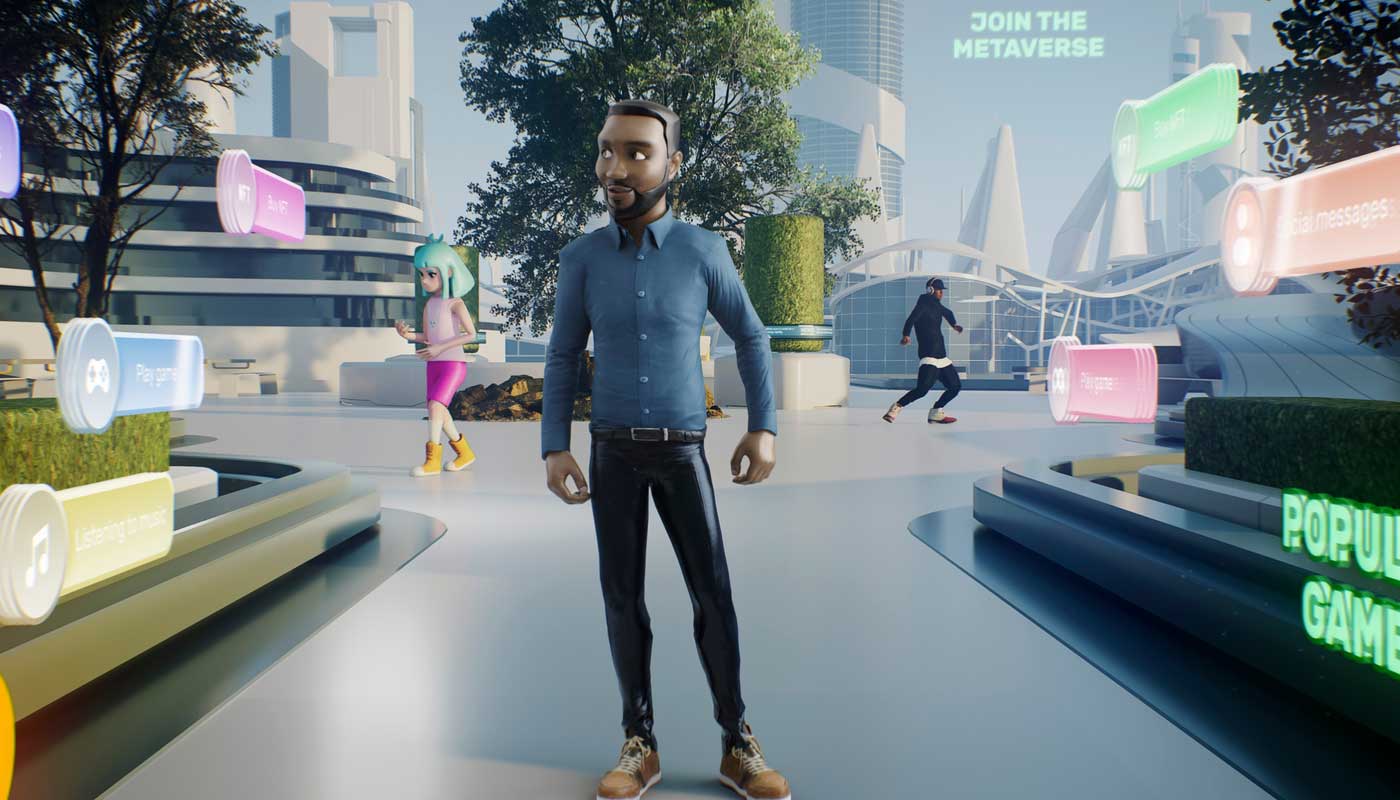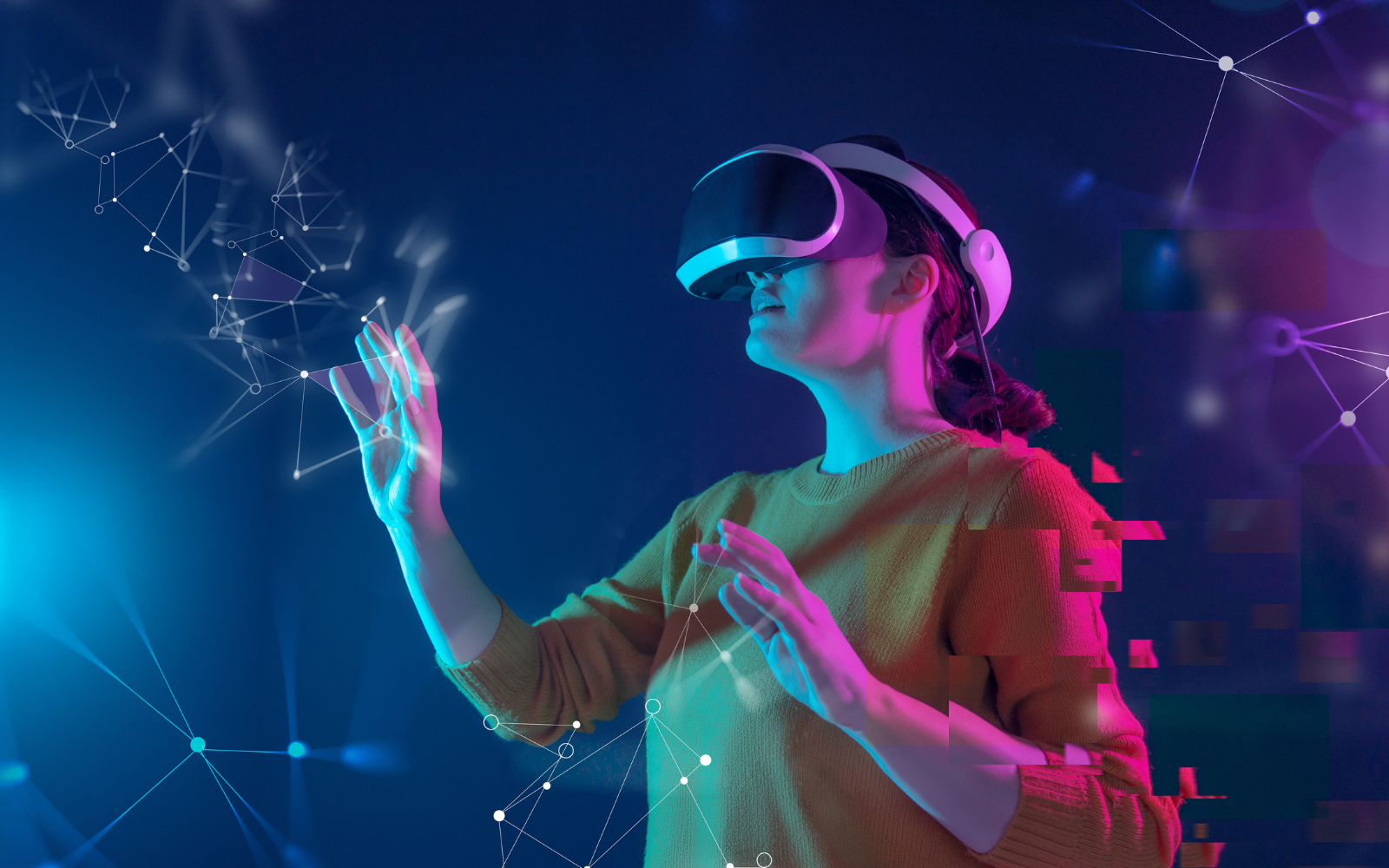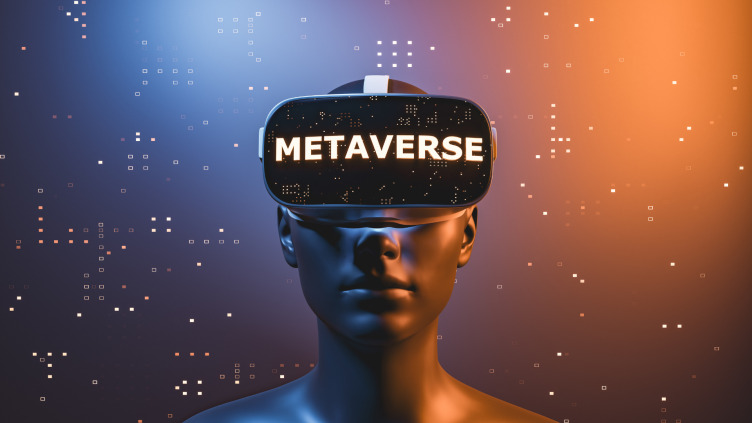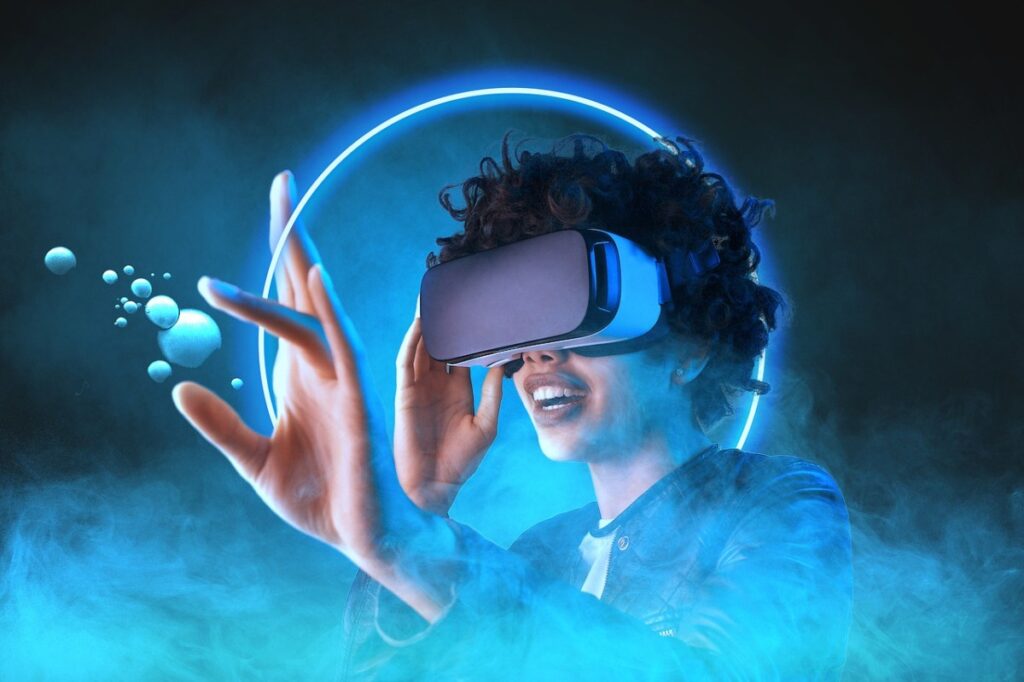The Metaverse is a collective virtual shared space created by the convergence of virtually enhanced physical reality and persistent virtual worlds. It offers immersive digital experiences that blend augmented reality, virtual reality, and the internet.
The Metaverse represents a new frontier in digital interaction. Users can engage in a variety of activities such as socializing, gaming, and shopping within a unified virtual environment. This interconnected virtual realm allows for seamless integration of digital and physical worlds, enhancing user experience.
As technology advances, the Metaverse continues to evolve, promising innovative opportunities for businesses and individuals. It is not just a futuristic concept but an emerging reality that is transforming how we interact, work, and play in the digital age.
Introduction To The Metaverse
The Metaverse is a new, exciting digital world. It blends real and virtual realities. Imagine a place where you can work, play, and socialize all online. The Metaverse is not just a game; it’s a whole universe of possibilities.
Origins And Evolution
The concept of the Metaverse started in science fiction. Neal Stephenson coined the term in his 1992 novel, “Snow Crash.” Early versions of the Metaverse appeared in online games. These games allowed players to explore virtual worlds.
Over time, technology improved. Virtual Reality (VR) and Augmented Reality (AR) made the Metaverse more immersive. Today, companies invest billions in creating and expanding the Metaverse.
Importance In Today’s World
The Metaverse is important for many reasons. It offers new ways to connect with people. You can meet friends from around the world in virtual spaces.
The Metaverse also creates new job opportunities. Developers, artists, and marketers can all find work in this digital world. It is also a new marketplace. You can buy and sell virtual items, like clothes for your avatar.
The Metaverse can also change education. Imagine attending a virtual school where you can explore ancient civilizations or outer space. The possibilities are endless.
| Aspect | Impact |
|---|---|
| Social Interaction | Connect with friends worldwide |
| Job Opportunities | New careers in digital spaces |
| Marketplace | Buy and sell virtual items |
| Education | Learn in immersive environments |
The Metaverse is a digital revolution. It changes how we interact, work, and learn.

Credit: foundever.com
Core Technologies
The Metaverse is a virtual universe where people interact digitally. It’s built using several core technologies. These technologies bring the Metaverse to life. Let’s explore the key technologies behind this digital world.
Virtual Reality
Virtual Reality (VR) immerses users in a completely digital environment. Users wear VR headsets to enter this world. These headsets have sensors that track head movements. This allows users to look around the virtual space.
VR also uses hand controllers. These devices let users interact with virtual objects. They can pick up items, move them, or even play games.
Some popular VR headsets include:
- Oculus Rift
- HTC Vive
- PlayStation VR
VR creates a sense of presence. Users feel like they are inside the virtual world. This technology is crucial for the Metaverse experience.
Augmented Reality
Augmented Reality (AR) overlays digital elements onto the real world. Users see these elements through devices like smartphones or AR glasses.
AR enhances the real world with digital content. This content can include images, sounds, or even interactive elements.
Examples of AR devices and applications include:
- Microsoft HoloLens
- Google Glass
- Pokemon Go
AR provides a blend of real and digital experiences. It is a key technology for the Metaverse. Users can interact with both worlds seamlessly.
Both VR and AR are essential for the Metaverse. They create immersive and interactive experiences. These technologies make the Metaverse possible.
Key Players
The Metaverse is growing fast. Key players drive this growth. They shape the future of virtual worlds. Let’s explore the top contributors.
Tech Giants
Several tech giants lead the charge in the Metaverse. They bring vast resources and experience to the table.
| Company | Contribution |
|---|---|
| Facebook (Meta) | Investing heavily in VR and AR technologies. |
| Microsoft | Developing mixed reality with HoloLens. |
| Advancing AR with Google Glass and other projects. | |
| Apple | Rumored to work on AR/VR headsets. |
Innovative Startups
Innovative startups play a crucial role. They bring fresh ideas and agility to the Metaverse.
- Roblox: A platform for user-created virtual worlds.
- Decentraland: A decentralized virtual reality platform.
- Unity: Provides tools for creating 3D content.
- Epic Games: Known for Unreal Engine and Fortnite.
These companies push boundaries. They create new possibilities in virtual spaces.

Credit: www.searchenginejournal.com
Applications In Various Sectors
The Metaverse is transforming many sectors with groundbreaking applications. It offers new opportunities in gaming, education, healthcare, and more. Below, we explore some key areas where the Metaverse is making a significant impact.
Gaming And Entertainment
The Metaverse is a game-changer in the gaming industry. It offers immersive experiences that go beyond traditional video games.
- Virtual Worlds: Players can explore vast, detailed virtual worlds.
- Social Interaction: Gamers can interact with friends in real-time.
- Customizable Avatars: Players can create and customize their avatars.
In entertainment, the Metaverse offers virtual concerts and movie screenings. Imagine attending a concert from your living room. It adds a new layer of engagement and fun.
Education And Training
The Metaverse is revolutionizing education and training. It provides interactive and engaging learning environments.
| Application | Benefit |
|---|---|
| Virtual Classrooms | Students can attend classes from anywhere. |
| Simulations | Hands-on learning experiences in a safe environment. |
| Collaborative Projects | Students can work together in real-time. |
Training in the Metaverse is cost-effective. It allows for realistic simulations and practice. This is especially useful for sectors like healthcare and aviation.
Social Impact
The Metaverse is more than just a digital playground. Its social impact is profound. It shapes how we interact, form communities, and express identities. The Metaverse brings people together in new ways. Let’s explore its social aspects.
Community Building
The Metaverse fosters community building like never before. Virtual spaces allow people to gather, regardless of physical location. Shared interests bring individuals together into virtual communities. These communities can host events, discussions, and collaborations. This strengthens bonds and creates a sense of belonging.
Communities in the Metaverse are diverse. They range from gaming guilds to professional networks. Even educational groups thrive in these virtual realms. The opportunities for connection are endless. People feel more included and connected.
Digital Identity
In the Metaverse, digital identity plays a crucial role. Users can create avatars to represent themselves. These avatars can be customized to reflect personal style and preferences. Digital identity allows for self-expression in unique ways.
People can explore different aspects of their personality. They can be anyone they want to be. This freedom fosters creativity and self-discovery. It also promotes diversity and inclusion.
Digital identity also impacts privacy and security. Users need to manage their digital selves responsibly. They must protect their personal information. The Metaverse provides tools for this. Ensuring a safe and secure environment is essential.
| Aspect | Impact |
|---|---|
| Community Building | Fosters connection and belonging |
| Digital Identity | Enables self-expression and creativity |
The Metaverse’s social impact is vast. From building communities to shaping digital identities, it transforms social interactions.

Credit: aiforgood.itu.int
Economic Opportunities
The Metaverse offers countless economic opportunities. It brings new ways to work, shop, and create wealth. Let’s explore some key areas where the Metaverse shines economically.
Virtual Commerce
Virtual Commerce is booming in the Metaverse. People can buy and sell digital goods. These goods include virtual clothes, art, and real estate.
Digital real estate is a hot market. Users buy land in virtual worlds. They build and sell properties on it. This creates a new wave of virtual entrepreneurs.
Businesses also set up virtual stores. They sell both digital and physical products. These stores reach a global audience. This expands their market reach tremendously.
Job Creation
The Metaverse creates many new jobs. Virtual jobs are in high demand. People work as virtual event planners, designers, and architects.
Content creators find many opportunities. They make virtual worlds, games, and experiences. This content attracts users and keeps them engaged.
A growing number of educators teach in the Metaverse. They offer classes and workshops. This helps people learn new skills in an immersive environment.
| Job Role | Description |
|---|---|
| Virtual Event Planner | Organizes events in virtual spaces |
| Virtual Designer | Creates digital assets and environments |
| Virtual Architect | Designs structures in virtual worlds |
| Content Creator | Produces engaging digital content |
| Virtual Educator | Teaches skills and knowledge in virtual classrooms |
These job roles showcase the varied opportunities in the Metaverse. Each role plays a part in building this digital economy.
Challenges And Concerns
The Metaverse offers exciting possibilities. Still, there are significant challenges and concerns. These issues need addressing to ensure a safe and inclusive digital world.
Privacy Issues
Privacy is a major concern in the Metaverse. Users share a lot of personal data. This data includes their location, interests, and even behavior patterns. Companies can misuse this information.
There are risks of data breaches and unauthorized access. Hackers can steal sensitive information. This makes users vulnerable to identity theft. Ensuring data security is crucial.
Parents also worry about children’s privacy. Kids may not understand the risks. Protecting their data is essential. Clear policies and parental controls can help.
Digital Divide
The Metaverse can widen the digital divide. Not everyone has access to high-speed internet. Many people lack the required devices. This limits their participation in the Metaverse.
Rural areas and developing countries face more challenges. Internet infrastructure is often poor. These regions need better connectivity.
Cost is another barrier. Advanced VR headsets and powerful computers are expensive. Many families cannot afford them. This creates inequality in access.
Education is also a factor. Some people lack digital literacy. They need training to use Metaverse platforms effectively. Community programs can bridge this gap.
| Challenge | Impact | Possible Solutions |
|---|---|---|
| Privacy Issues | Data breaches, identity theft | Strong data security, clear policies |
| Digital Divide | Inequality in access | Improve infrastructure, affordable devices |
Future Prospects
The Metaverse is evolving rapidly. Its future prospects are both exciting and transformative. Many believe it could reshape how we interact, work, and play. Below, we delve into some key aspects that highlight its potential.
Technological Advancements
Technological advancements are at the heart of the Metaverse. Virtual Reality (VR) and Augmented Reality (AR) are becoming more advanced. These technologies provide more immersive experiences.
5G networks enhance connectivity and reduce latency. This enables real-time interactions in the Metaverse. Blockchain technology ensures secure transactions and ownership of digital assets.
A table summarizing key technologies:
| Technology | Impact on Metaverse |
|---|---|
| Virtual Reality (VR) | Provides immersive experiences |
| Augmented Reality (AR) | Enhances real-world interactions |
| 5G Networks | Enables real-time interactions |
| Blockchain | Ensures secure transactions |
Potential For Global Change
The Metaverse has the potential for significant global change. It can transform how people work. Remote work could become more immersive and collaborative.
The Metaverse could revolutionize education. Students can attend virtual classes from anywhere. This could make quality education more accessible.
In the field of healthcare, virtual consultations and therapies could become the norm. This can improve accessibility to medical services.
Some potential global changes:
- Immersive remote work
- Accessible virtual education
- Revolutionized healthcare services
The Metaverse’s future prospects are vast. It promises to be a game-changer in many aspects of life.
Frequently Asked Questions
How Do I Enter The Metaverse?
To enter the metaverse, create an account on a platform like Decentraland or Roblox. Use VR headsets for immersive experiences.
Are We Living In A Metaverse?
No, we are not living in a metaverse yet. Currently, the metaverse concept is still in development stages.
What Is An Example Of A Metaverse?
An example of a metaverse is Decentraland. It’s a virtual world where users interact, create, and trade digital assets.
Is The Metaverse Real Now?
The metaverse is still evolving. Some platforms offer immersive experiences, but a fully-realized metaverse isn’t here yet.
Conclusion
The Metaverse offers endless opportunities for innovation, connection, and growth. It’s a new frontier for digital experiences. Embrace the potential and stay updated with its evolution. The future is virtual, and the Metaverse is leading the way. Stay curious, explore, and be part of this exciting journey.

